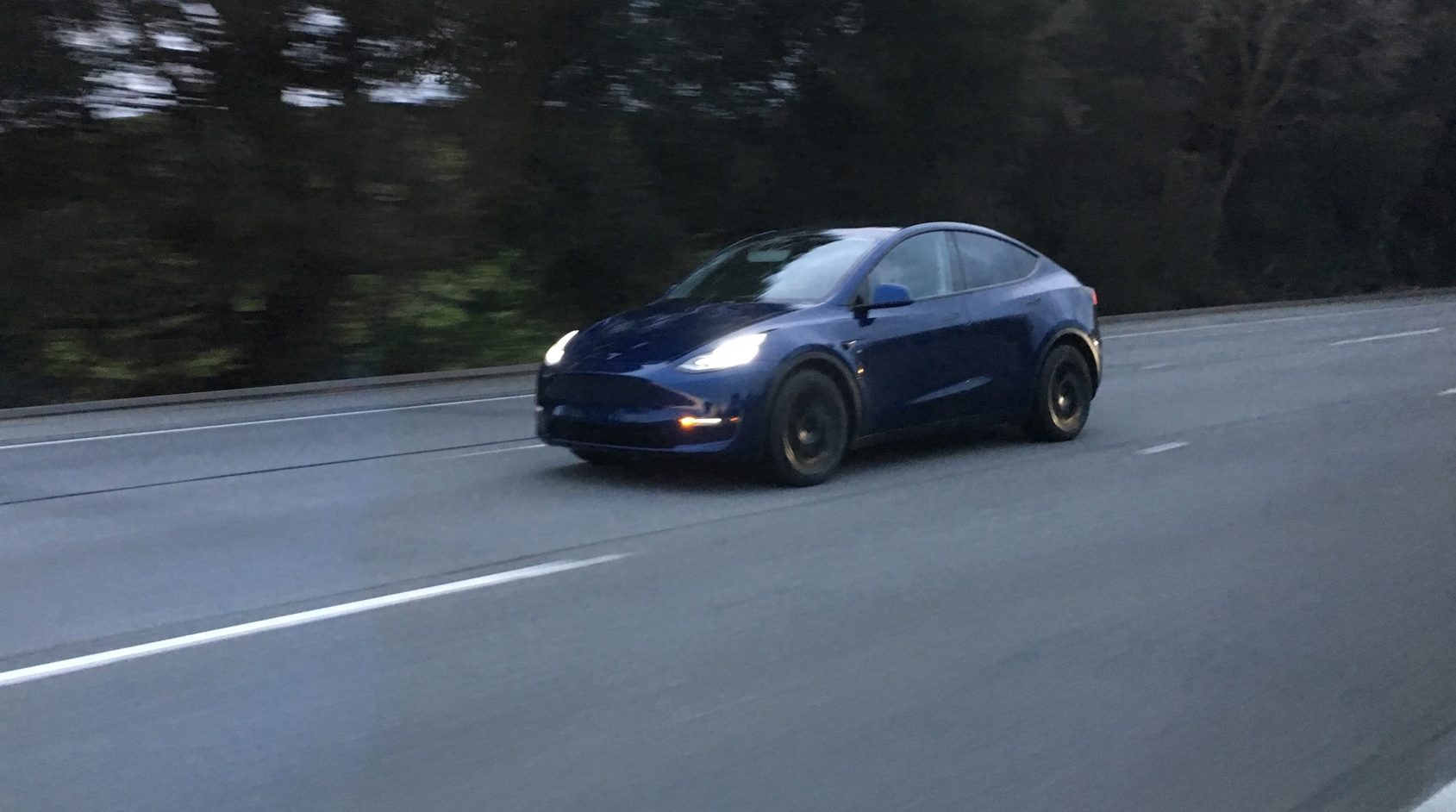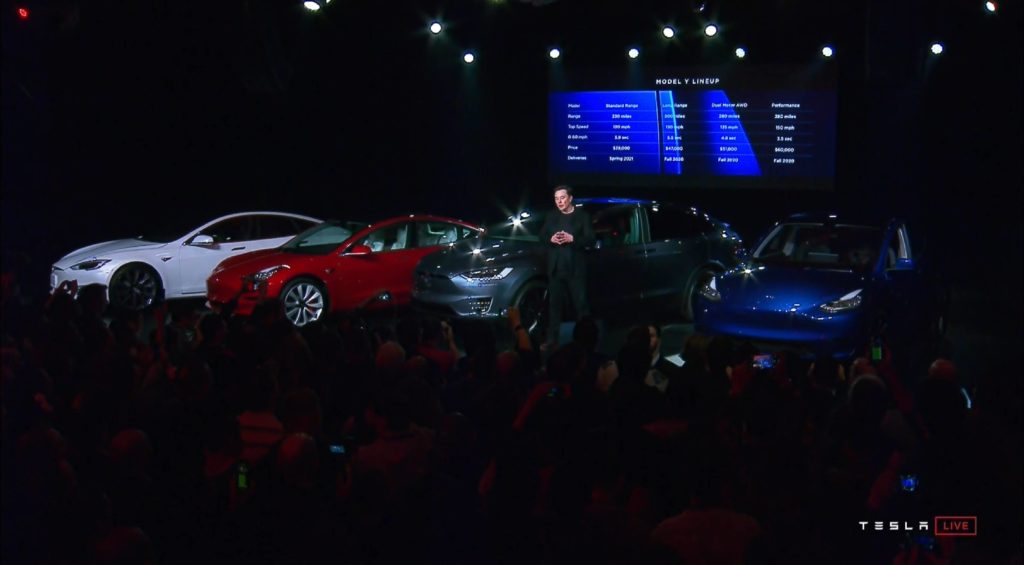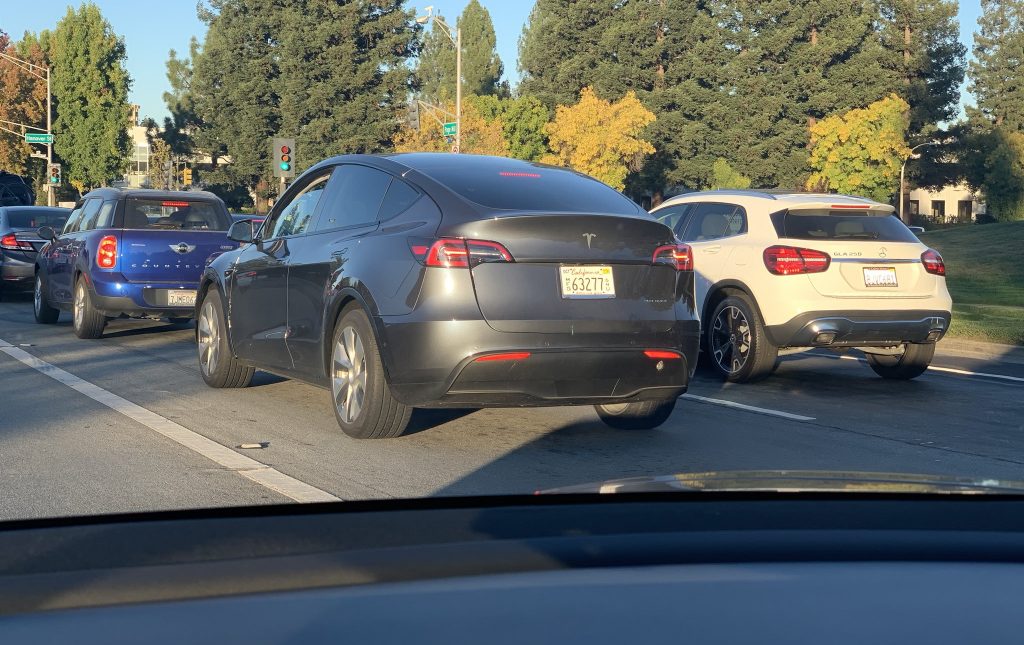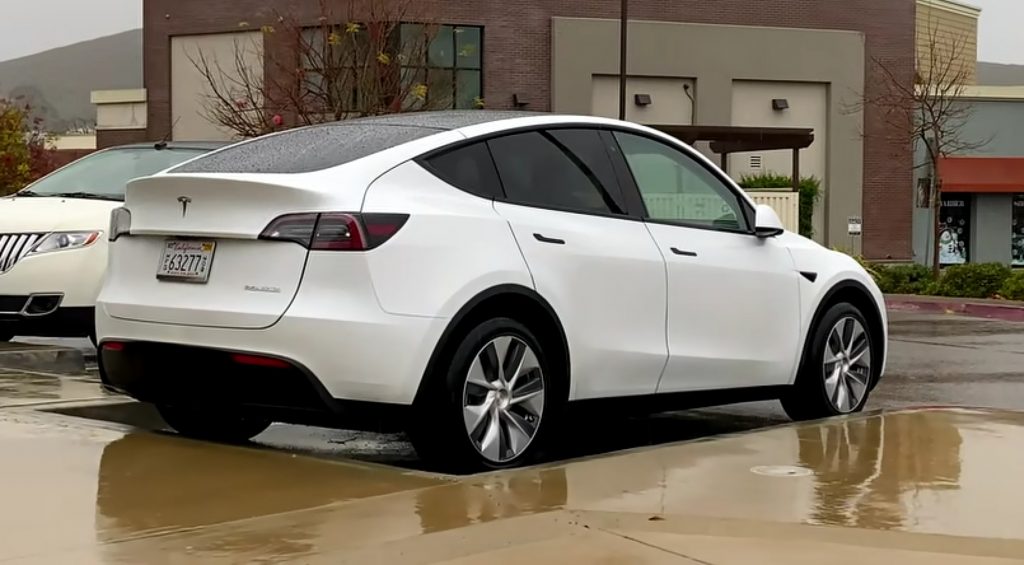

News
Tesla confessions: The Model Y is looking better and better the closer it is to production
Note: I don’t usually do personal op-eds, but I’m making an exception this time around. This story may be well worth the read, at least for those who have had the same experience.
I was at Porsche’s 2019 Annual Press Conference in Stuttgart when Tesla unveiled the Model Y. I was dead tired from the day’s activities, but considering that the all-important Model Y was being unveiled that day, I opted to just chuck an extra cup of coffee and pull an all-nighter instead. After all, the Model Y is arguably the EV that can very well make Tesla into a household name. It’s got the price, it’s competing in the crossover segment, and it’s coming at a time when Tesla wasn’t hanging by a thread anymore. And so, I waited, overdosed with caffeine, for the vehicle’s unveiling.
The event started off normal enough. I fired up my word processor and prepared to write. Elon Musk provided a compelling narrative about Tesla’s journey from the Roadster to the present, even bringing out the Model S, Model X, and Model 3 onstage. Then, at the end of the unveiling event, almost seemingly as an afterthought, Musk brought out the Model Y. Out then comes a vehicle that looks nearly identical to a Model 3. In the darkened stage the two were almost indistinguishable from each other. It’s slightly taller, and it was chrome deleted, but that’s about it. Then, following a very brief discussion of its specs and its estimated release date, the Model Y’s unveiling event was done.

Needless to say, I was a bit underwhelmed. I’ve been following the Model Y story for years, and amidst all this excitement for the vehicle, it turned out to be this chunkier Model 3. Other journalists on my bus who also attended the Porsche press conference the following morning felt the same. Jokes were thrown around. “It’s a fat Model 3.” “Why, Model Y?” Even I, the conference’s token reporter from the “obviously pro-Tesla website,” couldn’t really “defend” the Y’s design that much. It’s not like I could say a much. It’s really just a bigger Model 3.
That was months ago. Since then, there have been an increasing number of Model Y sightings across the United States. Bob Lutz has called the Y a “terminally ugly” vehicle, even adding that he doesn’t really know how anyone can buy the Model Y. Yet, amidst all these sightings, and as reports from Tesla indicated that the Model Y might be starting production earlier than expected, something happened. Little by little, the Model Y started to look good — really good. And it doesn’t seem to be just me either. Comments on YouTube videos, Twitter posts, and Reddit threads showed that the Tesla community was warming up to the Y’s very Model 3-esque design.

This became even more evident when the size of the Y became evident. As it turns out, the Model Y seems to be a good deal larger than the Model 3, with some Tesla community members who have personally seen the vehicle stating that the crossover is actually pretty close in size to the Model X, Tesla’s largest vehicle before the massive Cybertruck. The Model Y also looked very attractive with its Gemini Wheels, which appear to be installed in release candidates of its Performance variant. A recent sighting of a white Performance Model Y from StevenMConroy depicts this very well.

Elon Musk has stated that the Model Y has the potential to outsell the Model S, Model X, and Model 3 combined. That’s a statement that sounds hyper-ambitious in a classic Elon Musk kind of way, but it’s feasible. The crossover market is vast, and it’s growing by the year. Combined with its trademark Tesla performance and its reasonable price, the Model Y has a ton of potential. It may have been an acquired taste for the Tesla community or people like me, but for the everyday car buyer, the Model Y may simply be this futuristic crossover that’s cheap to run, blazingly quick, spacious, and surprisingly reasonable in price. That’s a pretty difficult combination to beat.
There were a lot of criticisms that were thrown at the Model Y when it was unveiled, and a lot of it was due to its design. The TSLAQ group on Twitter actually insisted that there was no Model Y at all, and that the vehicle that Tesla unveiled was just a raised Model 3. But then, as the Model Y closes in on its first production, and as more and more release candidates start getting spotted on the road, it is starting to appear that perhaps, just perhaps, Tesla knew what it was doing when it decided on the crossover’s design. The Model Y may not incite the same excitement as the next-gen Roadster or have the same shock value as the Cybertruck, but perhaps, it doesn’t really need to.
It just needs to be. And for all-electric crossovers that are designed to be disruptive, that’s potentially enough. It certainly is for me.

News
Tesla is not sparing any expense in ensuring the Cybercab is safe
Images shared by the longtime watcher showed 16 Cybercab prototypes parked near Giga Texas’ dedicated crash test facility.

The Tesla Cybercab could very well be the safest taxi on the road when it is released and deployed for public use. This was, at least, hinted at by the intensive safety tests that Tesla seems to be putting the autonomous two-seater through at its Giga Texas crash test facility.
Intensive crash tests
As per recent images from longtime Giga Texas watcher and drone operator Joe Tegtmeyer, Tesla seems to be very busy crash testing Cybercab units. Images shared by the longtime watcher showed 16 Cybercab prototypes parked near Giga Texas’ dedicated crash test facility just before the holidays.
Tegtmeyer’s aerial photos showed the prototypes clustered outside the factory’s testing building. Some uncovered Cybercabs showed notable damage and one even had its airbags engaged. With Cybercab production expected to start in about 130 days, it appears that Tesla is very busy ensuring that its autonomous two-seater ends up becoming the safest taxi on public roads.
Prioritizing safety
With no human driver controls, the Cybercab demands exceptional active and passive safety systems to protect occupants in any scenario. Considering Tesla’s reputation, it is then understandable that the company seems to be sparing no expense in ensuring that the Cybercab is as safe as possible.
Tesla’s focus on safety was recently highlighted when the Cybertruck achieved a Top Safety Pick+ rating from the Insurance Institute for Highway Safety (IIHS). This was a notable victory for the Cybertruck as critics have long claimed that the vehicle will be one of, if not the, most unsafe truck on the road due to its appearance. The vehicle’s Top Safety Pick+ rating, if any, simply proved that Tesla never neglects to make its cars as safe as possible, and that definitely includes the Cybercab.
Elon Musk
Tesla’s Elon Musk gives timeframe for FSD’s release in UAE
Provided that Musk’s timeframe proves accurate, FSD would be able to start saturating the Middle East, starting with the UAE, next year.

Tesla CEO Elon Musk stated on Monday that Full Self-Driving (Supervised) could launch in the United Arab Emirates (UAE) as soon as January 2026.
Provided that Musk’s timeframe proves accurate, FSD would be able to start saturating the Middle East, starting with the UAE, next year.
Musk’s estimate
In a post on X, UAE-based political analyst Ahmed Sharif Al Amiri asked Musk when FSD would arrive in the country, quoting an earlier post where the CEO encouraged users to try out FSD for themselves. Musk responded directly to the analyst’s inquiry.
“Hopefully, next month,” Musk wrote. The exchange attracted a lot of attention, with numerous X users sharing their excitement at the idea of FSD being brought to a new country. FSD (Supervised), after all, would likely allow hands-off highway driving, urban navigation, and parking under driver oversight in traffic-heavy cities such as Dubai and Abu Dhabi.
Musk’s comments about FSD’s arrival in the UAE were posted following his visit to the Middle Eastern country. Over the weekend, images were shared online of Musk meeting with UAE Defense Minister, Deputy Prime Minister, and Dubai Crown Prince HH Sheikh Hamdan bin Mohammed. Musk also posted a supportive message about the country, posting “UAE rocks!” on X.
FSD recognition
FSD has been getting quite a lot of support from foreign media outlets. FSD (Supervised) earned high marks from Germany’s largest car magazine, Auto Bild, during a test in Berlin’s challenging urban environment. The demonstration highlighted the system’s ability to handle dense traffic, construction sites, pedestrian crossings, and narrow streets with smooth, confident decision-making.
Journalist Robin Hornig was particularly struck by FSD’s superior perception and tireless attention, stating: “Tesla FSD Supervised sees more than I do. It doesn’t get distracted and never gets tired. I like to think I’m a good driver, but I can’t match this system’s all-around vision. It’s at its best when both work together: my experience and the Tesla’s constant attention.” Only one intervention was needed when the system misread a route, showcasing its maturity while relying on vision-only sensors and over-the-air learning.
News
Tesla quietly flexes FSD’s reliability amid Waymo blackout in San Francisco
“Tesla Robotaxis were unaffected by the SF power outage,” Musk wrote in his post.

Tesla highlighted its Full Self-Driving (Supervised) system’s robustness this week by sharing dashcam footage of a vehicle in FSD navigating pitch-black San Francisco streets during the city’s widespread power outage.
While Waymo’s robotaxis stalled and caused traffic jams, Tesla’s vision-only approach kept operating seamlessly without remote intervention. Elon Musk amplified the clip, highlighting the contrast between the two systems.
Tesla FSD handles total darkness
The @Tesla_AI account posted a video from a Model Y operating on FSD during San Francisco’s blackout. As could be seen in the video, streetlights, traffic signals, and surrounding illumination were completely out, but the vehicle drove confidently and cautiously, just like a proficient human driver.
Musk reposted the clip, adding context to reports of Waymo vehicles struggling in the same conditions. “Tesla Robotaxis were unaffected by the SF power outage,” Musk wrote in his post.
Musk and the Tesla AI team’s posts highlight the idea that FSD operates a lot like any experienced human driver. Since the system does not rely on a variety of sensors and a complicated symphony of factors, vehicles could technically navigate challenging circumstances as they emerge. This definitely seemed to be the case in San Francisco.
Waymo’s blackout struggles
Waymo faced scrutiny after multiple self-driving Jaguar I-PACE taxis stopped functioning during the blackout, blocking lanes, causing traffic jams, and requiring manual retrieval. Videos shared during the power outage showed fleets of Waymo vehicles just stopping in the middle of the road, seemingly confused about what to do when the lights go out.
In a comment, Waymo stated that its vehicles treat nonfunctional signals as four-way stops, but “the sheer scale of the outage led to instances where vehicles remained stationary longer than usual to confirm the state of the affected intersections. This contributed to traffic friction during the height of the congestion.”
A company spokesperson also shared some thoughts about the incidents. “Yesterday’s power outage was a widespread event that caused gridlock across San Francisco, with non-functioning traffic signals and transit disruptions. While the failure of the utility infrastructure was significant, we are committed to ensuring our technology adjusts to traffic flow during such events,” the Waymo spokesperson stated, adding that it is “focused on rapidly integrating the lessons learned from this event, and are committed to earning and maintaining the trust of the communities we serve every day.”








